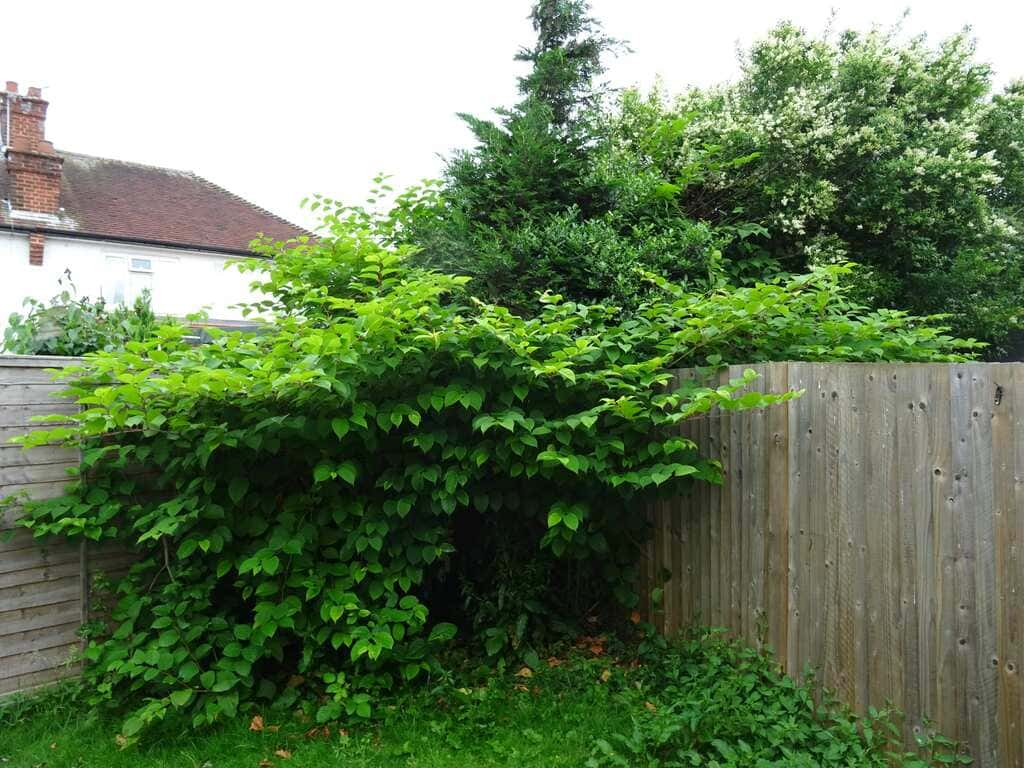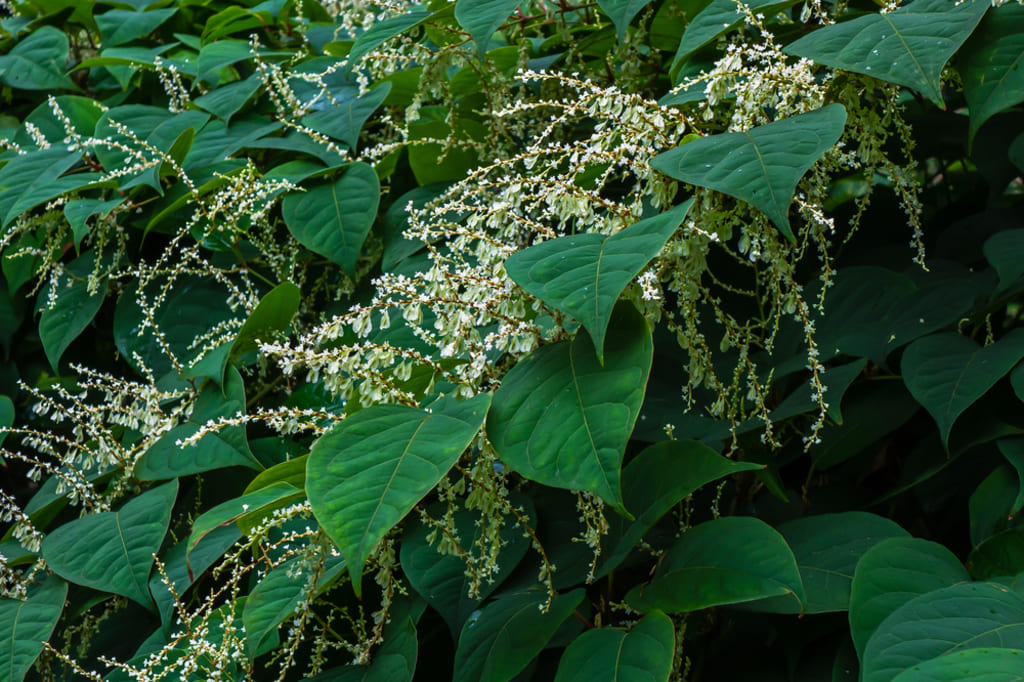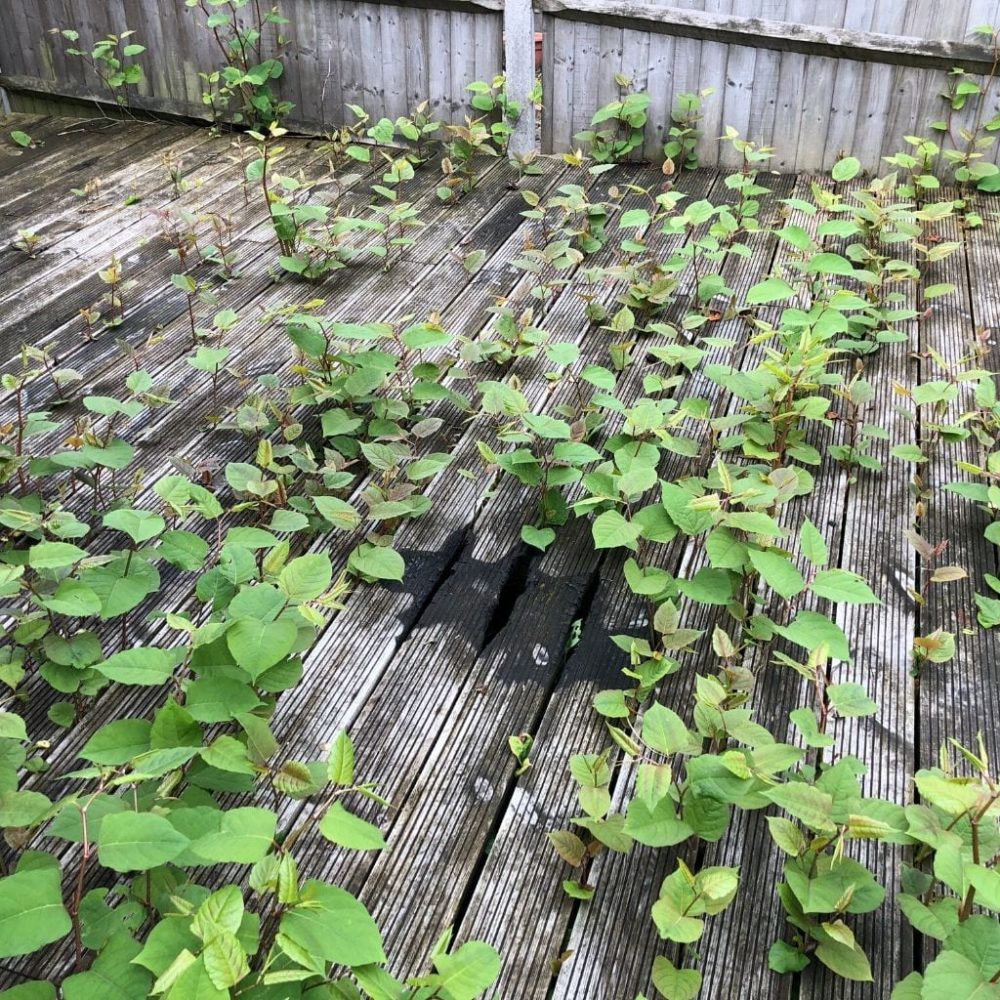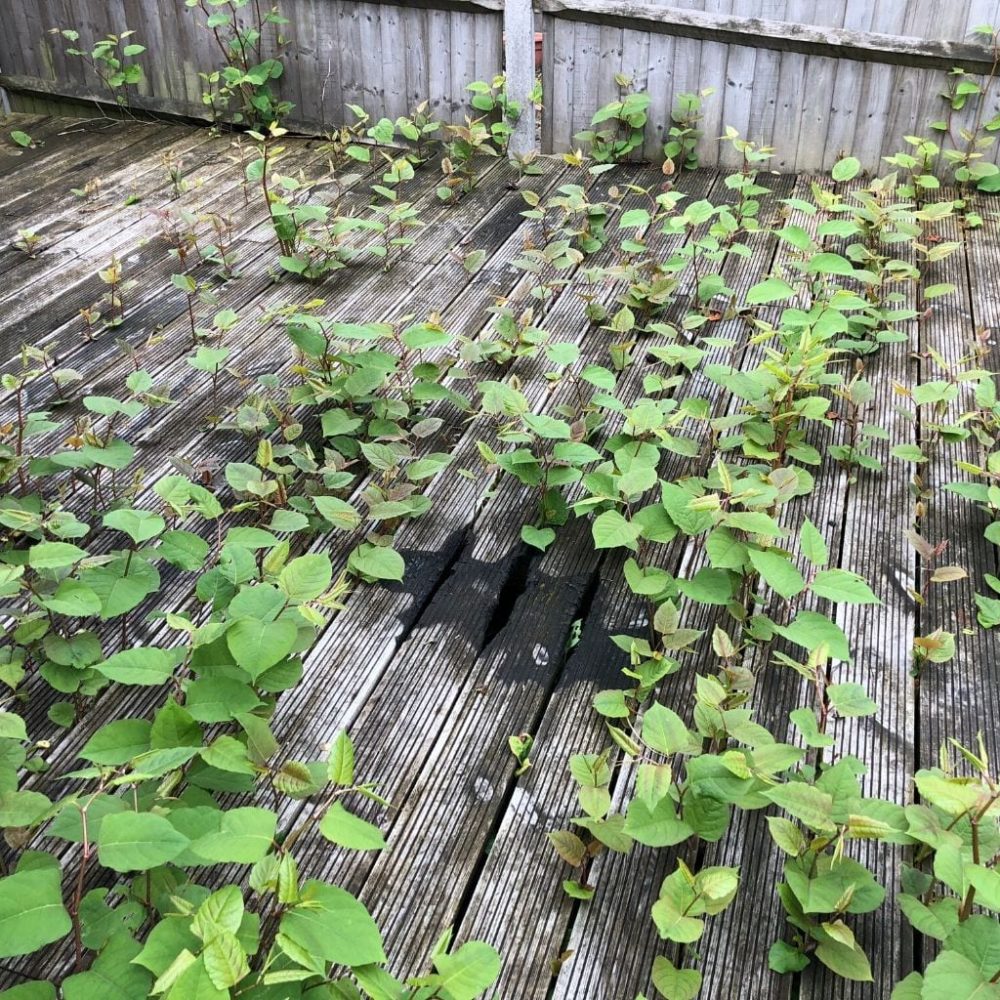
At a Glance
- Japanese Knotweed can damage buildings, affect property values, and cause mortgage issues.
- Removal must comply with UK environmental laws. DIY removal often worsens infestations.
- Professional removal ensures safety, compliance, and long-term control.
- CYB Environmental provides expert Knotweed management and documentation recognised by mortgage lenders.
How to Remove Japanese Knotweed Safely and Legally in the UK
Japanese Knotweed is one of the UK’s most aggressive invasive plants — notorious for damaging structures, lowering property values, and causing mortgage complications. Understanding how to approach Japanese Knotweed removal safely and legally is essential for homeowners, developers, and property managers.
At CYB Environmental, we specialise in compliant, effective, and environmentally responsible solutions for Japanese Knotweed removal across the UK.
What Is Japanese Knotweed and Why It’s a Problem
Japanese Knotweed (Fallopia japonica) is a highly invasive perennial plant introduced to the UK in the 19th century as an ornamental species. It spreads rapidly through underground rhizomes, root-like structures that can extend several metres horizontally and vertically beneath the soil. Even a fragment as small as 0.7 grams can regenerate into a new plant, making it extremely difficult to control once established.
While it may look harmless, Japanese Knotweed can cause serious issues for property owners and developers:
- Structural Damage: The plant’s powerful rhizome system can force its way through tarmac, concrete, paving slabs, and even the foundations of buildings. This leads to costly damage to paths, driveways, retaining walls, and drainage systems. Learn more about Knotweed damage.
- Property Devaluation: The mere presence of Japanese Knotweed can significantly reduce a property’s market value, as buyers and lenders often view it as a red flag.
- Mortgage Complications: Many mortgage lenders will refuse finance or remortgage if Knotweed is present without a recognised management plan carried out by a professional contractor such as CYB Environmental.
- Legal and Neighbour Disputes: If Knotweed spreads beyond your property boundaries, even unintentionally, you may face legal action from affected neighbours or enforcement notices from local authorities. Visit our About Us page to see how we ensure legal compliance.
- Environmental Risks: Knotweed outcompetes native flora, disrupting ecosystems and reducing biodiversity along riverbanks, railways, and construction sites. See our blog for expert advice on sustainable management.
In short, Japanese Knotweed is more than an aesthetic problem — it’s a legal, financial, and environmental liability that requires expert intervention.
Legal Considerations for Knotweed Removal
Removing Japanese Knotweed is not as simple as cutting it down or digging it up. Because of its invasive nature and environmental impact, it is subject to several UK legal controls and waste management regulations. Understanding these laws is essential to ensure compliance and avoid costly penalties.
Wildlife and Countryside Act 1981: Under this Act, it is an offence to plant or cause Japanese Knotweed to grow in the wild. This includes accidental spreading during construction, landscaping, or soil movement. Offenders may face criminal charges and substantial fines.
Environmental Protection Act 1990: Japanese Knotweed and the soil it contaminates are legally classified as “controlled waste”. This means they must be disposed of at a licensed landfill site equipped to handle Knotweed material. Transporting or dumping it without proper documentation breaches waste management regulations.
Anti-Social Behaviour, Crime and Policing Act 2014: Local authorities and the police can issue Community Protection Notices (CPNs) if you fail to control Knotweed and it affects others. Ignoring such notices can result in criminal prosecution or significant fines.
Construction and Development Implications: Developers must conduct invasive species surveys before starting work. If Knotweed is found, a Site Management Plan and treatment schedule must be in place before excavation begins.
Because of these strict legal requirements, Knotweed removal should always be managed by licensed professionals who can provide proper documentation, including waste transfer notes, treatment plans, and insurance-backed guarantees, to demonstrate full compliance.
Failing to follow these laws not only risks fines and prosecution but can also invalidate property insurance or lead to expensive remediation later. Working with an accredited specialist such as CYB Environmental ensures your Knotweed removal is handled safely, legally, and with complete peace of mind.
 Safe and Effective Methods of Japanese Knotweed Removal
Safe and Effective Methods of Japanese Knotweed Removal
Successfully removing Japanese Knotweed requires more than just cutting it back or digging it out. Because of its aggressive growth and deep-rooted rhizome system, professional removal is essential to prevent regrowth and to comply with environmental legislation.
At CYB Environmental, we use a combination of proven, science-backed techniques tailored to the site’s size, condition, and intended land use. The three most common and effective methods are outlined below:
1. Herbicidal Treatment
Herbicidal control remains the most common and cost-effective method for Japanese Knotweed management, especially for residential or low-disturbance sites.
This process involves the application of systemic herbicides, which are absorbed by the plant’s leaves and transported down into the rhizomes, killing them over time. Because the rhizome network can extend several metres underground, multiple treatments are required, typically over two to three growing seasons, to achieve full eradication.
Key Considerations:
- Only qualified operatives holding PA1/PA6 spraying certification should apply herbicides.
- The herbicide selection depends on the site’s environment — near watercourses, for example, requires specific Environment Agency-approved formulations.
- Treatments are best carried out during the active growth phase (late spring to early autumn) when the plant is most receptive.
- CYB Environmental tailors each treatment programme to the site’s environmental sensitivity, plant density, and land use goals, ensuring maximum long-term success.
This method is ideal for properties where immediate excavation is not required, and budget-conscious homeowners seek a gradual, environmentally responsible solution.
2. Excavation and Disposal
Excavation is the fastest and most definitive method of Japanese Knotweed removal, particularly suited for construction, redevelopment, or time-sensitive projects where the plant’s presence may delay planning approval or groundwork.
This process involves excavating contaminated soil and rhizomes to a depth of at least 3 metres, sometimes more depending on soil conditions. The removed material must then be transported to a licensed landfill facility equipped to handle Knotweed-contaminated waste.
Key Considerations:
- Excavation must be carefully managed to avoid spreading fragments to clean areas, even a small rhizome can re-establish a colony.
- Waste must be accompanied by Waste Transfer Notes and disposed of according to Environmental Protection Act 1990 regulations.
- Clean and contaminated soils should be clearly segregated and stored in designated, contained zones on-site.
- CYB Environmental prepares a comprehensive Knotweed Management Plan (KMP) before any excavation begins, ensuring full compliance with planning and environmental requirements.
Although more costly than herbicidal treatment, excavation offers immediate clearance and is often the only viable option for development or high-risk sites.
3. On-Site Containment
In some cases, complete removal of Japanese Knotweed is not practical or necessary — for example, on large construction sites where infested soil can be safely isolated. In these situations, on-site containment offers a cost-effective and legally compliant solution.
This method involves burying or capping Knotweed-contaminated soil using a specialist geomembrane barrier system. The barrier prevents rhizomes from spreading into clean soil, effectively containing the infestation while allowing development to proceed.
Key Considerations:
- Buried Knotweed material must be placed at a minimum depth of 2 metres, wrapped securely in root-resistant membrane, and clearly marked on site plans.
- Capping systems must remain intact and undisturbed by future construction works.
- A long-term monitoring plan should be implemented to ensure no regrowth occurs on the surface.
- CYB Environmental designs and installs engineered containment systems that comply with Environment Agency guidance, integrating them into broader site management strategies.
On-site containment is particularly beneficial for large infrastructure projects where excavation and off-site disposal would be prohibitively expensive.
In every case, CYB Environmental’s approach combines legal compliance, environmental care, and technical precision, ensuring that Japanese Knotweed is controlled safely, effectively, and permanently.
Why Choose Professional Japanese Knotweed Removal
DIY attempts often fail because even a small rhizome fragment can regrow into a full infestation. By choosing professionals like CYB Environmental, you benefit from:
- Comprehensive site surveys and risk assessments.
- Lender-approved management plans for property sales and mortgages.
- Insurance-backed guarantees for long-term reassurance.
- Environmentally responsible disposal and legal compliance.
Key Takeaways
- Japanese Knotweed removal must comply with UK environmental law.
- Professional management ensures safe, effective, and legally compliant eradication.
- DIY removal can worsen infestations and risk legal penalties.
- CYB Environmental provides expert, guaranteed solutions across the UK.
- Proper documentation protects your property value and mortgage eligibility.
Japanese Knotweed is a persistent and legally sensitive issue, but with professional help, it can be safely controlled and eradicated.
Whether you’re a homeowner, developer, or surveyor, CYB Environmental provides trusted, fully compliant solutions for Japanese Knotweed removal throughout the UK.



